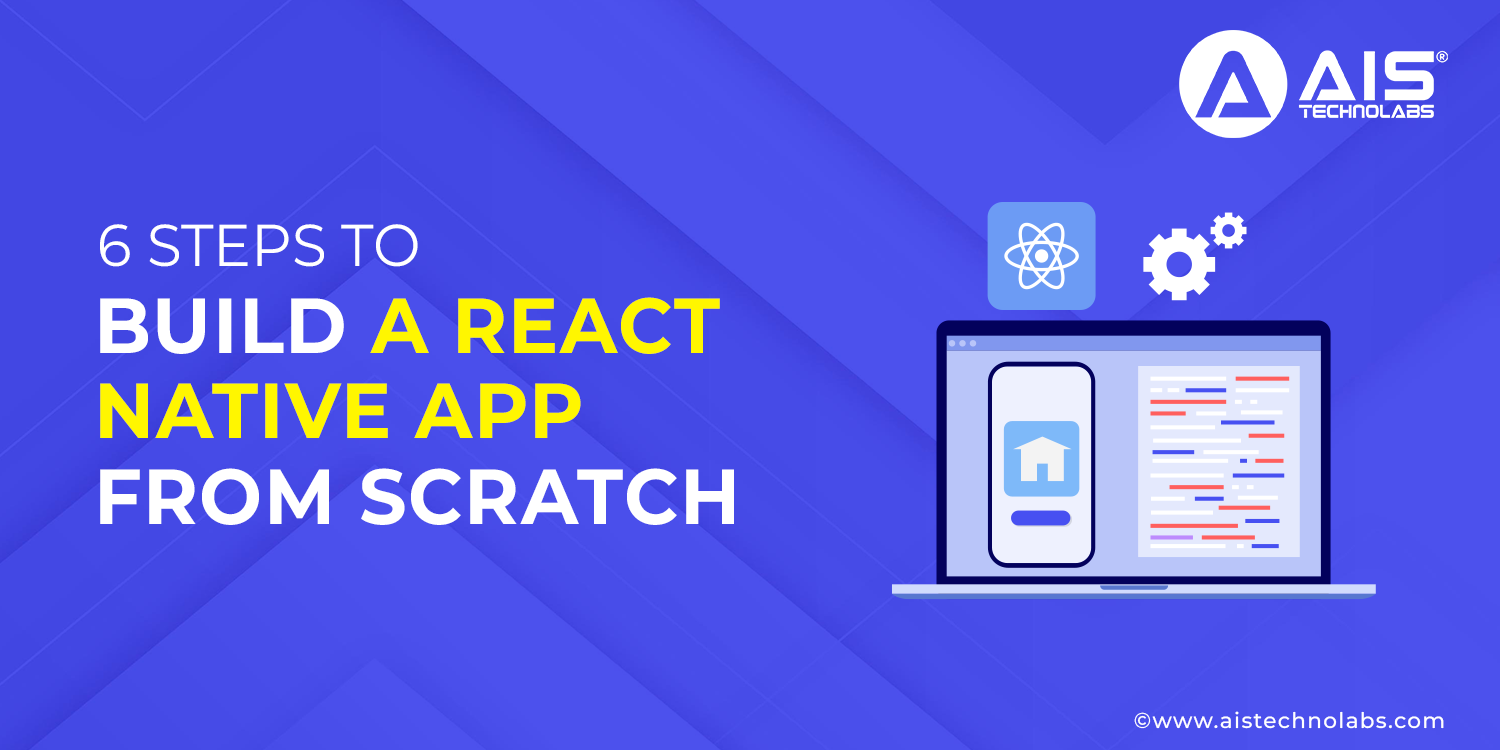Table of Content
(1198 views)

Quick Summary
React Native development is highly effective, making it a top choice for app developers. If you're interested in building a React Native app, you've come to the right place. Whether you're a beginner or just unsure where to start, here are step-by-step instructions to help you build your first React Native application from scratch! However, if you need expert assistance, you can always hire React Native developers to guide you through the process.
This blog provides 6 steps to help you build a React Native app from scratch with the assistance of experienced React Native app developers.
Setting up the Environment for your React Native App Development
Before we move to the development process, it is important to create the environment required for building a React Native App. Once you have learned the basic steps, you will be ready to move further and turn your dream project into reality.
Firstly, you would need to install Node.Js and NPM, which will download simultaneously. For the coding process, you need to have a basic knowledge of CSS, HTML, and JavaScript, and you must hire React native developers who have the required skills for your project. Moreover, you must ensure the availability of an effective code editor to work on the projects you create.
Contact Ais Technolabs To Build High-End React Native Applications For Business Growth.
The Steps to build a React native app from scratch
Starting with React Native can be challenging, but with the proper guidance, you'll be building robust applications in no time. In this guide, we will break down the process into clear, manageable steps. Let's understand how to build a React Native app from scratch:
Step 1: Commanding a React Native Application
To begin your project, go to the command prompt and enter the following command — “npx react-native init my-first-react-native-app.” After its execution, you will automatically be provided with a folder named “my-first-react-native-app” in your system. Alongside the folder, you will be equipped with all the packages required to create your project.
Step 2. Changing the directory of the project
Now change the directory of your project by entering the following command, — “npx cd my-first-react-native-app.” You can navigate and continue to your desired location now.
Step 3. Overviewing the React Native App Structure
After your project files are installed, you will be provided with various folders, and it is important to know about them beforehand.
- Node_modules: This folder comprises the Create React native application-dependent code but would not be needed as such.
- package.json: Created by NPM, it consists of the Metadata, script, and the required modules for your project.
- .gitignore: This tells Git to overlook certain files and folders in the project.
- App.js File: Undoubtedly the most important, it is the initial point of our application and the major component.
Step 4. Testing your application
Once the coding process is completed, you need to process further and check your application performance on different platforms. For this purpose, navigate to your directory in a new window. You would need to enter the following commands to test your applications :
- On Android: npx react-native run-android.
- On iOS: npx react-native run-ios.
After this, your application will be built and tested on both of the platforms.
Step 5. Making the desired changes
Once the testing is completed, you may prefer to make some changes or simply sort out the omissions. To modify the code, navigate to the project directory and start editing the source code files. You can re-launch the application and ensure that the performance matches your expectations.
Step 6. Debugging and Hot-Reloading
These two features would prove to be helpful in your development process. When you save your changes, the application will reload with the latest updated code. This feature is called “Hot Reloading”. Another feature is the debugging option, which allows you to debug using any tool. You can go with React Native Debugger or any other preferred tool. Finally, you can start creating your project by customizing it through screens, features, and APIs accordingly.
Want To Build Data-Driven And Innovative Applications Using React Native?
Why choose AIS Technolabs for Your React Native App Development Project?
At AIS Technolabs, we have years of extensive experience and provide expert guidance, thus helping you understand complex react native concepts with ease. All our developers have a minimum experience of 3 years and are well-versed in react native development. With the right tools and years of professional experience, we have proved ourselves as one of the best React native development companies in the field.
Moreover, we also provide a 15-day risk-free trial and refund in case of dedicated projects for your peace of mind. Apart from that, if you are not satisfied with the developer designated to you, we also provide the change of developer options in between the projects.
Building a React Native app is a straightforward process when you have the right guidance. This 6-step guide covers all the essential stages to build a react native app. This includes everything from setting up your environment to debugging your app. With clear instructions and practical tips, you'll gain the knowledge and skills needed to create a robust and efficient app from scratch.
FAQs
Yes, it is possible to run React Native applications in the background. For this purpose, you would require specific packages such as “react-native-background-task.” Using this feature, you can easily enable background syncing, location, and notifications.
If your project relies upon platform-specific features or complex UI/UX components, it is advisable to port to the iOS Swift app. If you want your app to be cross-platform, React Native is your best bet.
There are a lot of ways to seed data in your React Native Application. Some of them are Hardcoding, storing data in JSON files, using a Local Database, or fetching data through network requests.
The React native environment provides developers with time and cost-effective features. It enables cross-platform compatibility and reusable codebase, saving developers a lot of time.
While both Flutter and React native apps are used to develop cross-platform applications, a lot of factors differentiate them. Flutter uses Dart language instead of JavaScript. Moreover, React Native App was developed by Meta, whereas Google developed Flutter.

Harry Walsh
Harry Walsh, a dynamic technical innovator with four years of experience, thrives on pushing the boundaries of technology. His passion for innovation drives him to explore new avenues and create pioneering solutions that address complex technical problems with ingenuity and efficiency. Driven by a love for tackling problems and thinking creatively, he always looks for new and innovative answers to challenges.